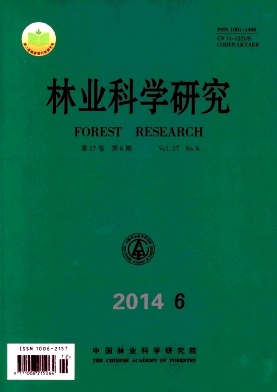Investigation of Wood Species Prone to Forming Zone Lines
-
1.
College of Materials and Engineer, Southwest Forestry University, Kunming 650224, Yunnan, China
-
2.
Iowa State University, Ames, IA50011, USA
-
3.
Zhongshan Vocational-technical School, Zhongshan 528400, Guangdong, China
-
Received Date:
2014-06-15
-
Abstract
Spalting is the coloration on wood produced by fungi, of which, zone lines forming intricate patterns are ornamental. Researches indicate that fungal zone lines are preferentially formed in certain wood species to others. For the purpose of artificially producing spalted wood with zone lines, a survey was launched in the wood specimen of Southwest Forestry University and in the wild. Results show that zone lines rarely occurred in softwoods and often occurred in hardwoods belonging to Jualandaceae, Aceraceae, Corylaceae, Betulaceae, Sterculiaceae, Lauraceae, etc., but was not detected in Dipterocarpaceae, Rutaceae, Sapindaceae, Myrtaceae, etc., The wood species prone to forming zone lines inclnde Acer mono Maxim, Alnus nepalensis D. Don., Albizzia julibrissin Durazz., Michelia alba DC., Ficus virens Ait., Cyclocarya paliurus (Batal.)Iljinsk., Phoebe neurantha (Hemsl.)Gamble, Populus davidiana Dode, etc.
-

-
References
|
[1]
|
何海珊, 邱 坚, 甘昌涛. 花斑木研究现状及展望[J]. 西南林业大学学报, 2013, 33(6):94-97.
|
|
[2]
|
邱 坚, 何海珊. 菌作媒,木生花——花斑木提高木材综合利用率[J]. 中国红木古典家具, 2013(12):56.
|
|
[3]
|
Robinson S C, Richter D L, Laks P E. Colonization of sugar maple by spalting fungi[J]. Forest Products Journal, 2007, 57(4): 24-32. |
|
[4]
|
Robinson S C, Laks P E. Wood species and culture age affect zone line production of Xylaria polymorpha[J]. Mycological Research, 2010, 4(1):18-21. |
|
[5]
|
Robinson S C, Laks P E. Wood species affects laboratory colonization rates of Chlorociboria sp.[J]. Int Biodeterior Biodegradation, 2010, 64(4): 305-308. |
|
[6]
|
Robinson S C, Laks P E, Turnquist E J. A method for digital color analysis of spalted wood using scion image software[J]. Materials, 2009, 2(1): 62-75. |
|
[7]
|
Robinson S C, Richer D L, Laks P E. Effects of substrate on laboratory spalting of sugar maple[J]. Holzforschung, 2009, 63(4):491-495. |
|
[8]
|
Robinson S C, Laks P E. The effects of copper in large-scale single-fungal and dual-fungi wood systems[J]. Forest Product Journal, 2010, 60(6):490-495. |
|
[9]
|
Robinson S C, Laks P E and Richter D L. Stimulating spalting in sugar maple using sub-lethal doses of copper[J]. European Journal of Wood and Wood Products in Review, 2010, 69(4):527-532. |
|
[10]
|
Robinson S C, Richter D L, Laks P E, et al. Evaluating loss of machinability in spalted sugar maple[J]. Forest Products Journal, 2007, 54(4):33-37. |
|
[11]
|
Robinson S C, Tudor D, Cooper P A. Wood preference of spalting fungi in urban hardwood species[J]. International Biodeterioration & Biodegradation, 2011,65:1145-1149. |
|
[12]
|
Robinson S C, Tudor D, Hipson S. Methods of inoculating Acer spp., Populus tremuloides and Fagus grandifolia logs for commercial spalting applications[J]. Journal of Wood Science, 2013, 59:351-357. |
|
[13]
|
何海珊, 伍建榕, 邱 坚, 等. 花斑木菌种筛选[J]. 林业科学, 2014, 50(5):119-122.
|
|
[14]
|
郭梦麟, 蓝浩繁, 邱 坚. 木材腐朽与维护[M]. 北京:中国计量出版社, 2010: 154-156, 159-160.
|
-
-
Proportional views

-





 DownLoad:
DownLoad: